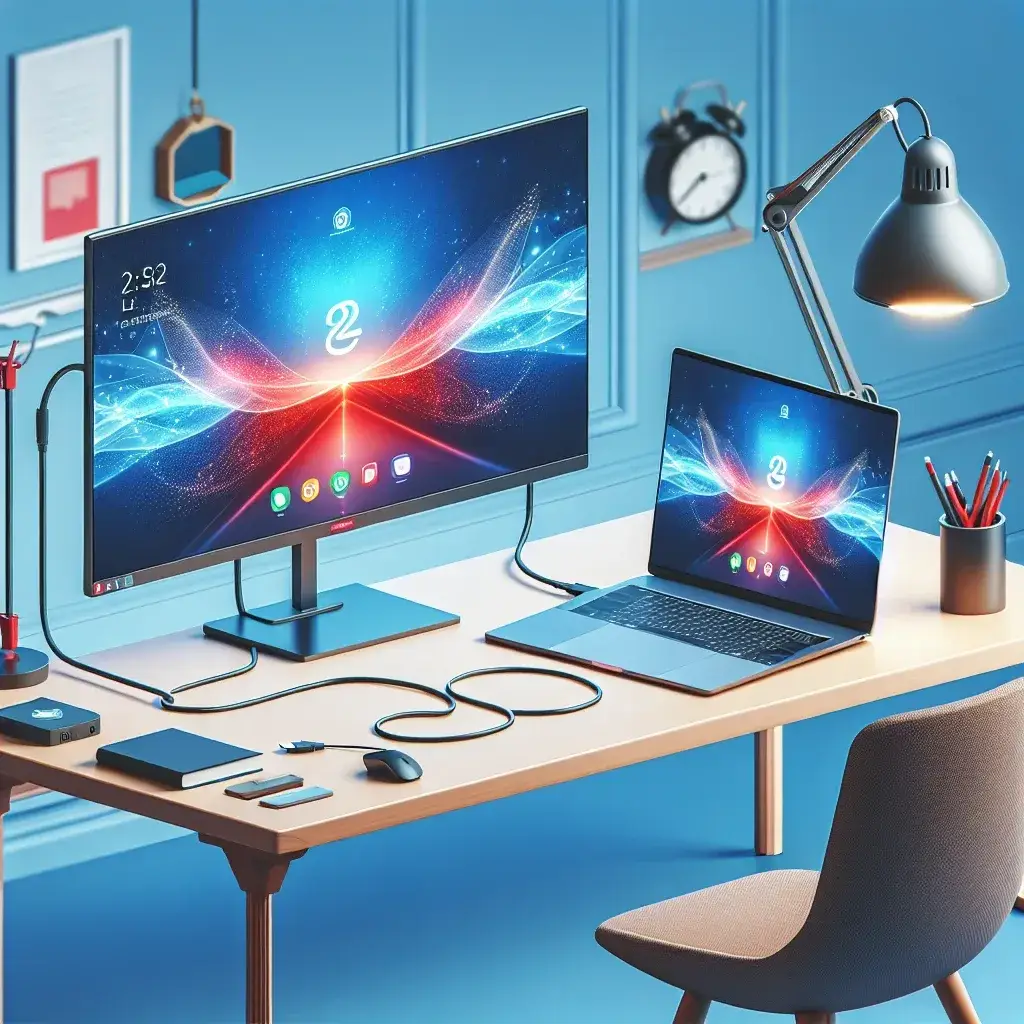Introduction
Are you wondering if you can use an LED monitor with your laptop? The simple answer is yes! Connecting an LED monitor to your laptop can significantly enhance your productivity and improve your overall viewing experience. Whether you are a student, professional, or gamer, using a larger and higher-quality screen can make a noticeable difference. In this article, we will explore the benefits of using an LED monitor with a laptop, guide you through the setup process, and offer some tips to optimize your dual-screen experience.
Benefits of Using an LED Monitor with a Laptop
There are numerous advantages to integrating an LED monitor with your laptop. Here are some of the key benefits:
- Enhanced Productivity: With a dual-screen setup, you can multitask more efficiently by having multiple applications open simultaneously.
- Improved Visuals: LED monitors typically offer better resolution, color accuracy, and brightness compared to laptop screens.
- Ergonomic Comfort: Positioning the monitor at eye level can help reduce neck and eye strain.
- Expanded Workspace: An additional monitor provides more screen real estate, which is especially useful for design, programming, and data analysis tasks.
How to Connect an LED Monitor to Your Laptop
Connecting an LED monitor to your laptop is a straightforward process. Here are the steps you need to follow:
Step 1: Check Compatibility
Ensure that your laptop has the necessary ports to connect to an external monitor. Common ports include HDMI, DisplayPort, USB-C, and VGA. Verify that your LED monitor supports the same type of connection.
Step 2: Gather Necessary Cables
Depending on the available ports on your laptop and LED monitor, you may need specific cables or adapters. For instance, if your laptop has an HDMI port and your monitor uses DisplayPort, you will need an HDMI to DisplayPort adapter.
Step 3: Connect the Monitor to the Laptop
Use the appropriate cable to connect your LED monitor to the laptop. Plug one end of the cable into the monitor and the other end into the respective port on your laptop.
Step 4: Configure Display Settings
After connecting the monitor, you need to configure the display settings on your laptop. Here is how you can do it:
- Windows: Right-click on the desktop, select “Display settings,” and choose how you want the displays to work (e.g., extend, duplicate).
- Mac: Go to “System Preferences,” click on “Displays,” and adjust the arrangement and display settings.
Tips for Optimizing Your Dual-Screen Setup
Once your LED monitor is connected, you can take several steps to optimize your dual-screen setup:
- Adjust Resolution: Ensure that both screens are set to their recommended resolutions for the best visual experience.
- Arrange Displays: In the display settings, arrange the screens in a way that matches your physical setup. This arrangement can make the cursor movement between screens more intuitive.
- Use Display Modes: Depending on your workflow, you can choose between different display modes such as extending, duplicating, or using only the external monitor.
- Invest in a Docking Station: If you frequently connect and disconnect your laptop from the monitor, consider using a docking station for ease of connectivity.
- Keep Drivers Updated: Ensure that your laptop’s graphics drivers are up-to-date to avoid any compatibility issues.
Common Issues and Troubleshooting
While connecting an LED monitor to your laptop is generally a trouble-free process, you might encounter some common issues. Here are a few troubleshooting tips:
- No Signal: Check that both the laptop and monitor are powered on and that the correct input source is selected on the monitor.
- Display Not Recognized: Restart your laptop and try reconnecting the cable. If the issue persists, update your graphics drivers.
- Display Flickering: Ensure that the cable is securely connected. If you are using an adapter, try replacing it with a different one.
- Incorrect Resolution: Manually adjust the resolution in the display settings to match the monitor’s native resolution.
Conclusion
Using an LED monitor with your laptop is a great way to improve your work efficiency and visual experience. By following the steps outlined in this article, you can easily set up a dual-screen configuration and enjoy the many benefits it offers. Remember to optimize your display settings and resolve any common issues you may encounter. Whether you’re working from home, creating content, or simply enjoying multimedia, an LED monitor can make a significant difference.

